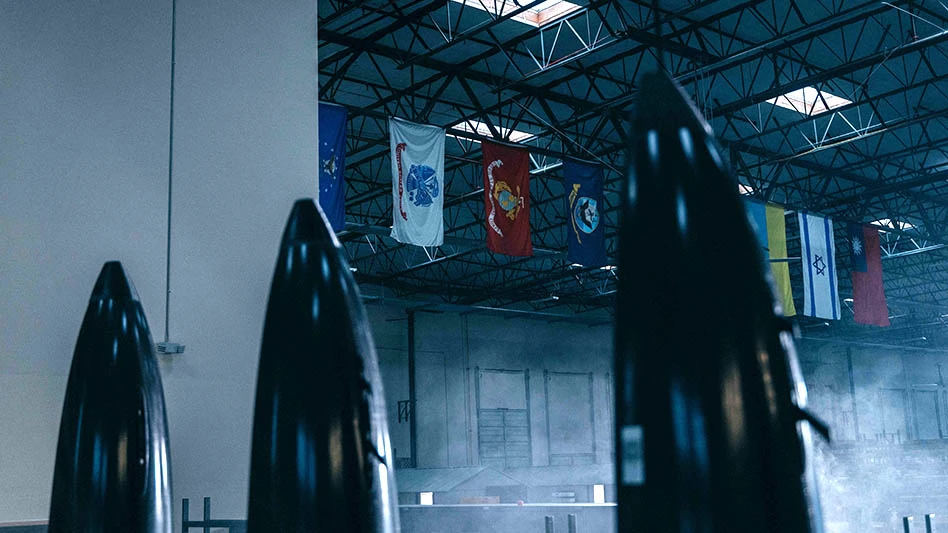
Airbus has more than 12,000 active suppliers for commercial aircraft worldwide. In the last 15 years, North America has become the most important region for sourcing outside of Europe.
At the Pacific Northwest Aerospace Alliance (www.pnaa.net) 2018 Conference, Lynnwood, Washington, Airbus executives described the company’s priorities in qualifying supply chain partners.
Pierre-Laurent Mace, vice president of strategic procurement for North America, heads the regional sourcing office supporting all Airbus divisions in the U.S., Canada, and Mexico. He’s been in his current position since April 2016.
“Suppliers enable us to deliver the quality, on time, on cost,” Mace says. “We need to buy from companies that enable us to satisfy our customers, who have very high expectations. With the complexity of our products, we need more of our suppliers close to those facilities, to set up shop, to create jobs, to be able to support our customers.”
A team of about 80 in Mace’s division work with local suppliers. Many are global but have a local presence. This is important when a challenge arises in the design.
“We buy 70% of our planes, so we cannot afford to have surprises on the sourcing and delivery of parts,” Mace emphasizes. “We need to develop trust and reliability, and to manage a partner relationship to adapt permanently to the market evolution and the airlines’ expectations.”
Increasing production
Giuseppe (Joe) Marcheschi is Airbus Americas’ head of North American strategic procurement support, with responsibility for commodities relating to aerostructures, raw materials, detailed parts, fabrication, standard parts, fasteners, and flight
“What are we looking for in the supply chain?” he asks. “Any good supplier should know his customer well and know we at Airbus are looking at a ramp-up situation. A supplier – and the supply chain supporting it – should be planning to meet the ramp-up.”

At the end of May 2018, Airbus’ backlog of jetliners remaining to be delivered stood at 7,153 aircraft, representing approximately nine years of production at current rates.
Marcheschi adds, “The airlines demand flexibility and that we incorporate changes rapidly. You need to plan how you are going to deal with change. A good supplier should know where Airbus is investing in technology, and not wait for us to adopt it and then not have the capacity available to us when we need it.”
Becoming a supplier
“What do we need?” Marcheschi weighs in with his list.
On-time delivery – “Some people think 100% on-time delivery is a target. It’s not a target, it’s the baseline, it’s the rule.”
There will be challenges for us and you, and you need to adjust, find ways to be more competitive and lean in your manufacturing process.” – Joe Marcheschi, Head of Strategic Procurement Support, Airbus Americas
Quality – “Quality is a given. It has to be. We cannot accept quality failures.”
Costs – Be creative and propose solutions for cost options. “We’re leaders in our field, and we strive every single day to find ways to reduce costs. As leaders in your own domain, you [suppliers] need to do the same thing. To sell more aircraft, we have to remain cost competitive. You have to evolve to lower costs. We expect you to invest in your people, infrastructure, and supply chain management.”
Intellectual property, aftermarket – “We’re paying a lot more attention to these, and we need to participate together to support our customers – the airlines – prepare the right solution, the right packages, and manage spares and repairs properly. We’re getting more involved with maintenance, repair, and overhauls, and setting up bases to support our aircraft in Asia-Pacific, the U.S., and Europe.”
Supply chain management – You are responsible. “Manage your suppliers properly. The failure may not be
Ramp-up – Demonstrate sufficient capacity to meet
Innovation – “Find disruptive innovations. Be ready to adopt them, to follow us. Don’t be stuck in the past. You’ve got to be thinking cloud and beyond. That’s what we mean by innovation,” Marcheschi says. “Becoming a world-class leader in your industry is not just buying the next machine and telling us, ‘Hey I’ve bought a new machine.’ That’s part of the solution, but not the whole solution. Look at your company, organization, and the whole process. How can you innovate, streamline, lean it out? Everyone has to make a commitment
Tale of two suppliers
Marcheschi cited an example of a meeting where prospective Supplier A bragged about how many machines he had, how many approvals, how many materials he worked on, and other positive aspects.
“Finally, he gets to


Another prospect, Supplier B, mentioned he’d been in business 60 years, had looked at the industry, and understood he needed to adopt new technology. The company reduced its product offering and focused on its core strength and became experts in that field.
Marcheschi says, “They reached 100% on-time delivery because of all these changes and are ready for the future. Guess which supplier I contacted?”
Marcheschi asks would-be suppliers, “What have you done to meet the challenges of the future? How have you prepared?”
Things are great; every year we’re increasing our production. We need you. Without suppliers, we couldn’t build airplanes. Without you, we wouldn’t be able to ship one airplane, because we don’t have the capability to do it in-house.” – Joe Marcheschi, Head of Strategic Procurement Support, Airbus Americas
Step up
“The competition is fierce. We can’t rest on achievements and technology of the past. Innovation and new technology will be the key differentiators for North America. Showcase your innovations. The status quo is not a place to be,” Marcheschi warns. “True leaders differentiate themselves. True leaders in this industry are the ones we want to do business with. It’s only by working together that we can meet the challenges, so we will all reap the benefits this great industry has generated for us.”
Airbus
www.airbus.com

Explore the July 2018 Issue
Check out more from this issue and find your next story to read.
Latest from Aerospace Manufacturing and Design
- March Manufacturing Lunch + Learn with Quell Corp.
- March Manufacturing Lunch + Learn with SMW Autoblok
- SwRI addresses critical aging aircraft issue
- Walter adds tools to its PCD milling cutter range
- Archer Aviation, Palantir partner on next-gen aviation
- Fairlane Products’ TG GripSerts and accessories for low-profile clamping
- Boeing to build US Air Force’s sixth-generation fighter jet
- Sandvik Coromant introduces CoroMill Plura barrel





